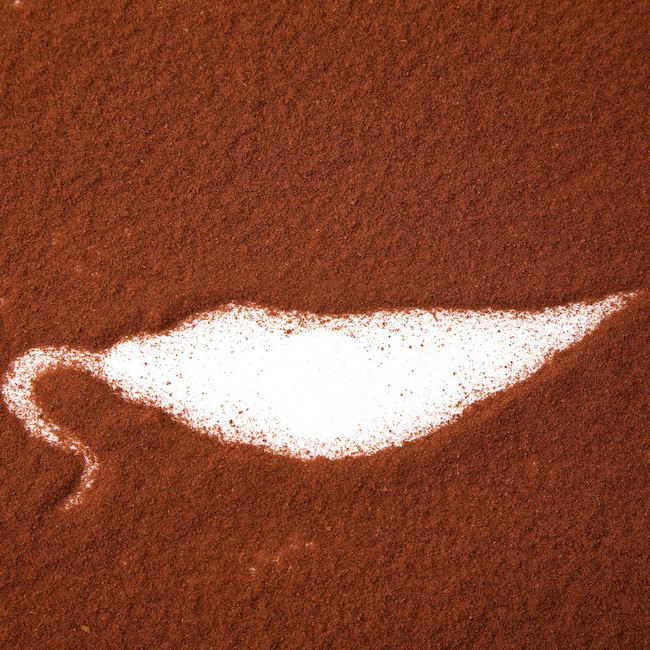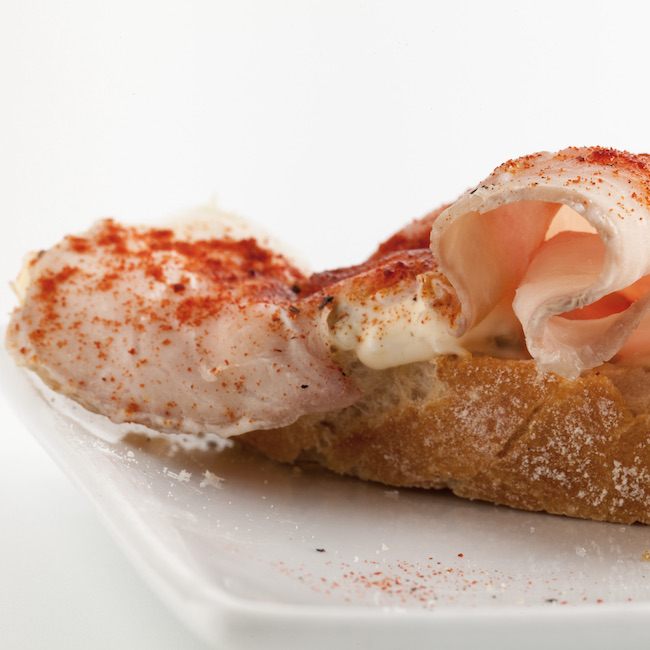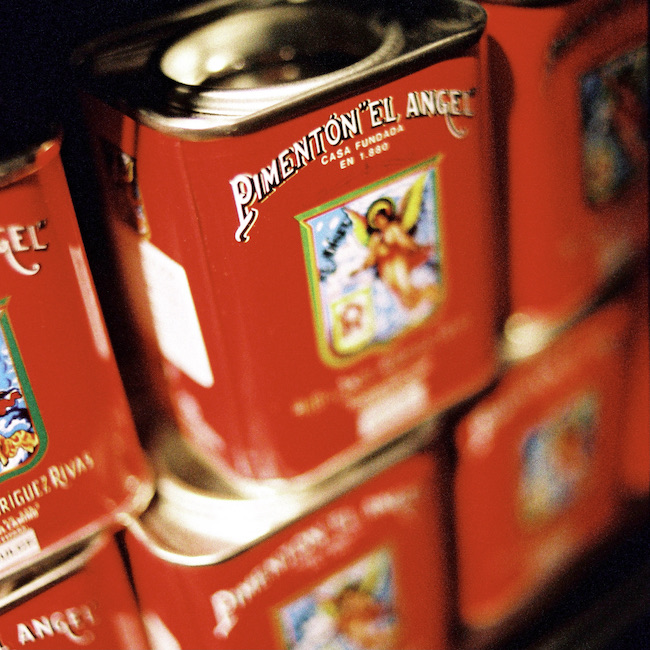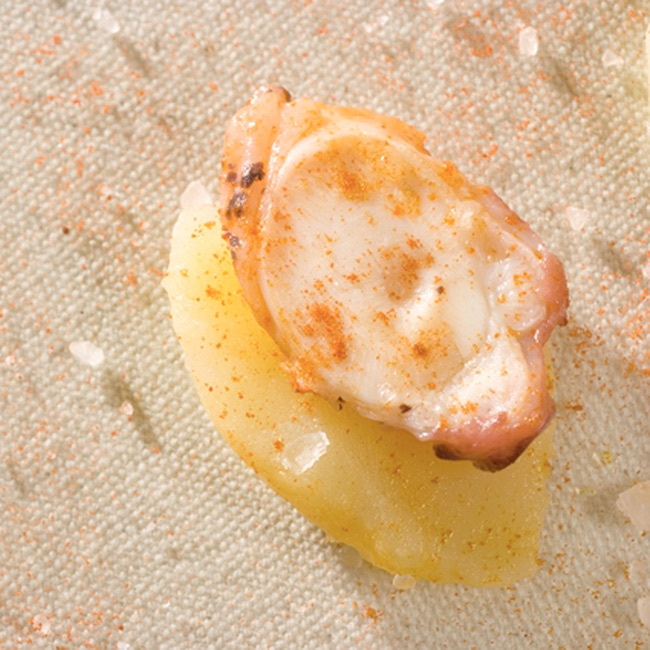by Fiona Dunlop - @ffdunlop
.png.transform/rendition-xs/image_image%20(1).png)
Food writer Fiona Dunlop -author of 'Andaluz:a food journey through Southern Spain'- takes us on a journey in search of one of the most distinctive flavors in Spain: one that grabs the heart of the greatest chefs

by Fiona Dunlop - @ffdunlop
A little heap of finely ground powder the intense colour of burnt-orange – so tempting. Pinch it, sprinkle, and a dish will be transformed – whether potatoes, fried eggs, a simple stew or more rarified octopus tentacles. For centuries pimentón has been a magic ingredient in dozens of Spanish recipes – and that allure is not over yet. In fact its cult status is such that village cooks make their own pimentón; necklaces of red peppers drying in the autumn sunshine are familiar sights and a reminder of this culinary obsession.
The origins of the powder are exotic. Five centuries ago Spanish colonials in central Mexico discovered dozens of varieties of chilli peppers that had been cultivated for thousands of years by indigenous people, creating a mindbogglingly complex, often fiery range of tastes. Ultimately it was the seeds of a mild red capsicum that Franciscan monks chose to transport across the Atlantic to plant in their monastery gardens, not being partial to hotter spices such as black or chilli pepper.

One of the Franciscans’ most hallowed retreats was Yuste, in La Vera, a bucolic valley of northern Extremadura. This is where Spanish pimentón started life when farmers were drying out tobacco leaves (another New World import) over holm oak fires, and strung up their red peppers nearby to dry. Today huge piles of capsicum are smoked over fires inside barns for up to a fortnight before being milled in a factory. And there you have it: pimentón de la Vera – the most famous of all. Whether mild and sweet (dulce), spicy (picante) or bitter-sweet (agridulce), it imparts a rich, dark colour and an unmistakable smoky piquancy.
The other chief source of Spanish pimentón is the region of Murcia, on the Mediterranean coast, where the seasoning is made from the small, dark-red ñora pepper. This too has three intensities but the difference here is that it is sun-dried, so lacks the smoky hit of La Vera. It is beloved not only by Murcians but also by Catalans and Valencians for flavouring rice dishes, stews and seafood.

Part of Spanish DNA
Now built into the Spanish DNA, pimentón is widely used by top chefs. One of them is Toño Perez, the two Michelin-star chef of Atrio, in Cáceres, close to the heart of La Vera production. Naturally the local speciality features in many of his refined dishes, for example Roast Scallops with La Vera pimentón, in which this slightly sweet, smoky seasoning is blended with garlic, potato and olive oil into a delectable cream.
The popularity and versatility of pimentón is proved, too, by the avant-garde chef Dabiz Muñoz, the three-star genius of Madrid’s DiverXo restaurant. Here he transforms a Singaporean Chilli Crab by substituting spicy pimentón for chilli pepper, and spider crab for king crab. Add to this a handful of Asian flavours and you have a spectacular fusion dish – with that inimitable edge. Even three-star Andalucian chef, Ángel León, ‘King of the Sea’, is a fan, as demonstrated in his celebrated Callos Marinos (Marine Tripe), a pioneering amalgam of seafood offcuts and tripe, flavoured with generous quantities of both sweet and hot pimentón.

Outside Spain and some classic dishes
In the USA, the prolific chef, entrepreneur and humanitarian, José Andrés, originally from Asturias, is another aficionado who will sprinkle or incorporate the red ochre spice over anything from pickled mussels to a classic Andalucian stew of chickpeas and spinach or his luscious scallops with roasted Catalan sauce.
Still in the world of more everyday dishes, pimentón goes particularly well with potatoes. When boiled then sliced and fried in olive oil and garlic, they are given an extra kick if pimentón is briefly infused (but beware - if cooked too long in hot oil it burns). Alternatively mashed potatoes can be boosted with the same garlic and paprika-imbued olive oil.
Spanish cooks will stir spoonfuls into a hearty Asturian fabada (bean stew) or Castilian lentil stew, add it to a sauce for patatas bravas, or shower it over tender boiled octopus or even goat cheese. In the Canaries pimentón is an integral ingredient of mojo rojo, an addictive, deep red chilli-based sauce (tastes are more extreme in these islands off Africa), while in the Balearics it laces Mallorcan sobrasada, a creamy pork paste with intense colour and taste.

That brings us to two absolute classics of the Spanish kitchen which would not exist without pimentón: chorizo and paella. Industrial quantities of chorizo, lomo and other embutidos churned out across the peninsula are nearly all spiked with and defined by paprika: where else would that tempting orange hue appear from? And then there is paella, much relished all over the globe although it originated in a strip of land along Valencia’s Mediterranean coast. Here, in the rice-fields, farmers cooked up impromptu lunches of rabbit, seafood and of course rice – coloured and flavoured with saffron and – what else? – a generous pinch of pimentón.